I absolutely love collecting seeds from the plants in our garden - to the point that I will confess that it is a bit of a compulsion. I really can't walk past a ripe seed head and ignore it. From June onwards I try and keep a few paper bags in my pocket when I'm working in case I spot something ready to collect. Of course this means that every job takes twice as long, as I keep getting pleasantly distracted :-) .
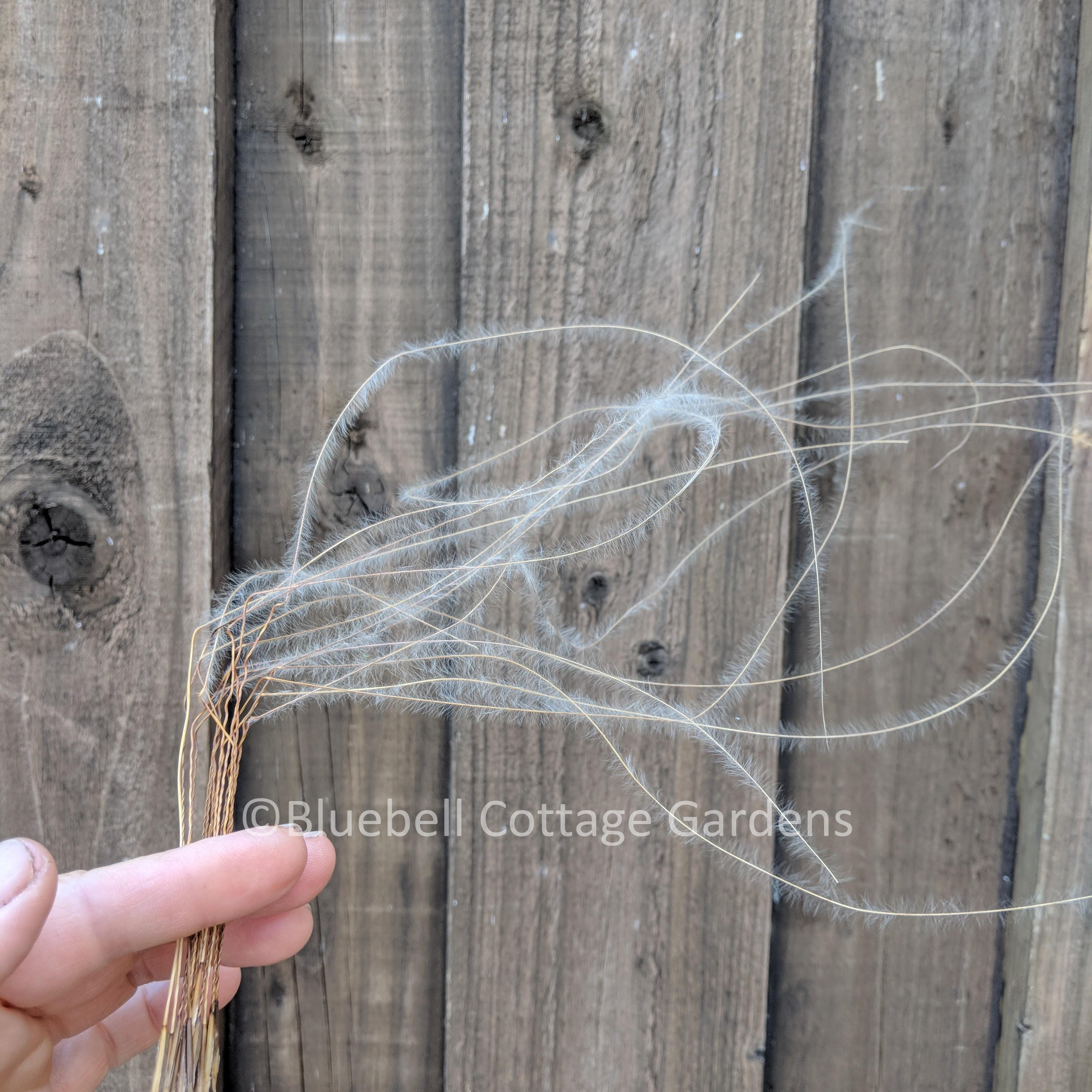
I'm fascinated by all the different shapes of seed heads and seeds, and the wonderfully inventive ways that plants have of launching their offspring out into the world. Some are tiny and light, like Digitalis grandiflora (Perennial Foxglove) seeds, which are almost as fine as dust. I guess these can travel some distance on a breeze.
Hardy geranium seed pods have explosive catapults that fire in five different directions. Others, like Orlaya grandiflora (White laceflower), have hard little hooks on the seeds, just like velcro, to catch on a passing animal and be scratched off elsewhere.
One of my favourite seeds is pictured right/above. It's from a low growing grass, Stipa tirsa, which has long feathery ‘awns’, perfect for flying away on the wind. These seeds have a second technique for success too. If you look closely at the photograph, you can see that the stiff section above the seed is twisted. When the seeds touch the ground, the awns twirl round, drilling the seed into the ground until it's at the right depth. Isn't that just wonderful?
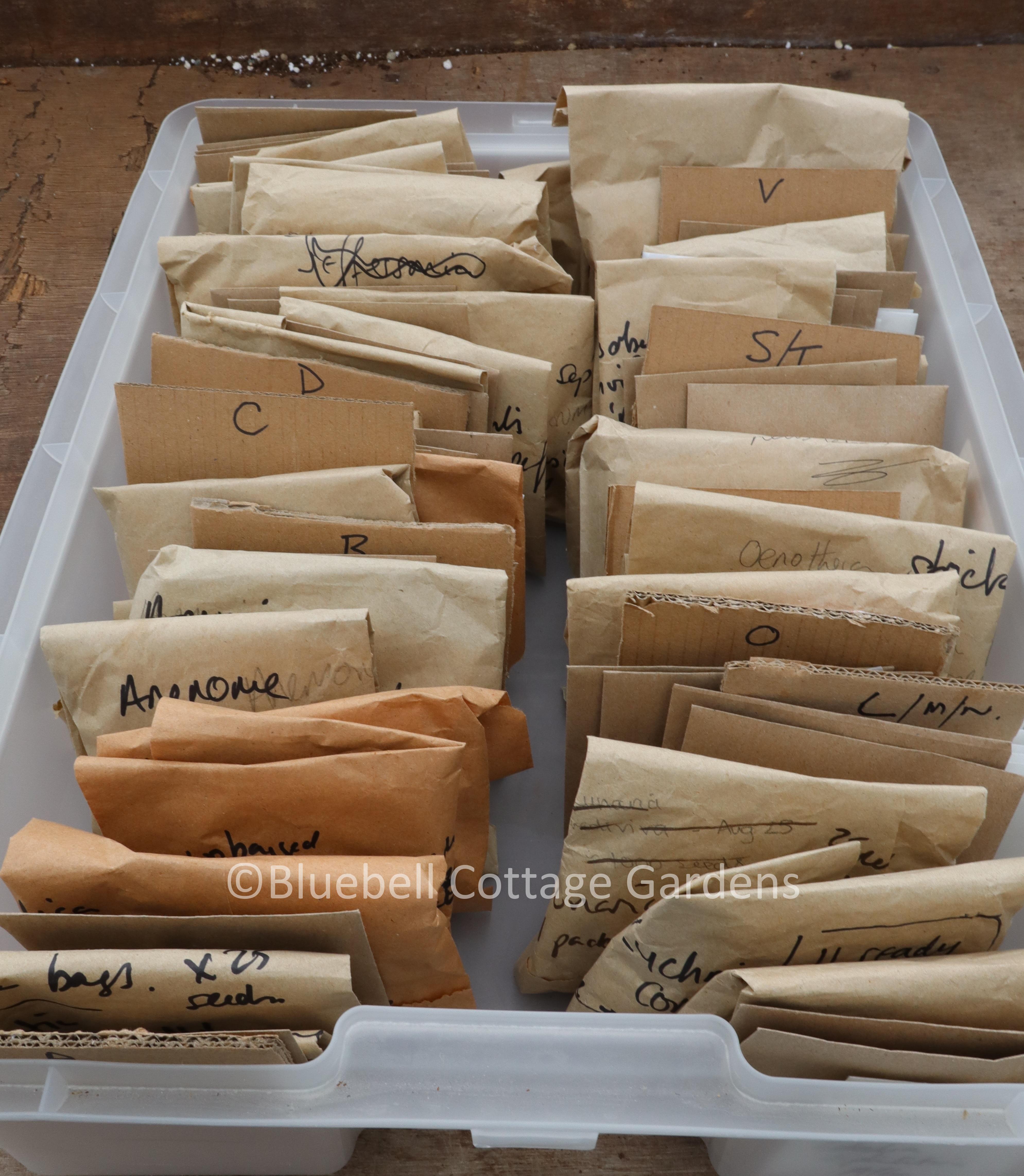
Every year I collect seeds from around 100 different plants from the garden. If we collect more than we need, we put some on the website for sale, while others are only collected in small quantities and we keep them back to produce new plants for the nursery - it's one of the ways that we use to keep our range of plants so varied.
You might think that after 18 years here, we would have the art of growing plants from seeds down to a fine art, but in truth we always have failures as well as successes and we adapt our techniques every year. I've shared below some of our tips for growing plants from seed. It's just a brief summary - I could write a whole book on the subject. Maybe I will :-).
Before I give you my five top tips, it's worth answering one key question. What, exactly, is a seed? (If you are a botanist or a biologist, you might want to look away now, for my answer isn't going to use the kind of scientific language that you'll find in horticulture text books). Inside most seeds is a tiny, pre-formed plant, complete with a little shoot and a root bud, attached to a food store and wrapped in a hard protective case. You could think of a seed as an embryo plant hooked up to a life support system and sealed in an incubator, with all its systems shut down, awaiting the right conditions to re-awaken. If you carefully slice a broad bean in half, you should just be able to make out the tiny, white plant on one side, attached to the huge white food stores. It's really quite fascinating to see.
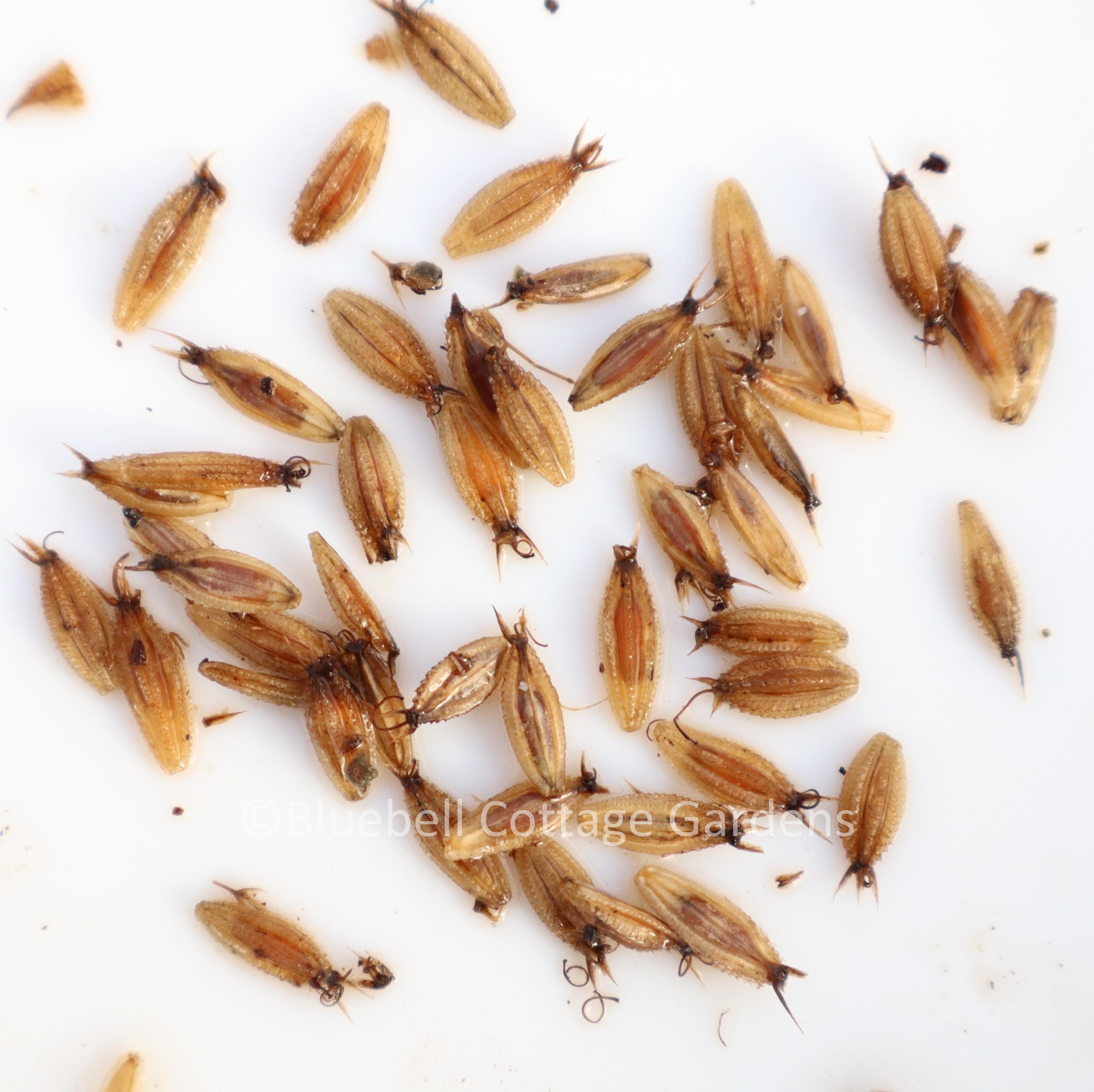
It takes a lot of energy for a plant to produce a seed. Ensuring that each seed has the best chance of germinating and growing into a mature plant able to produce more seed is vital to continuing the existence of the species. So plants take great care to ensure that seeds will only germinate when there is a good chance of success, using an armoury of defensive strategies.
Some tiny seeds will only germinate when they can detect light, which tells them they are close enough to the surface to reach it. Lots of seeds will only germinate after experiencing a lengthy cold spell, such as the Astrantia involucrata seeds, right. This tells them that winter has happened and it is probably spring. Others have a tasty coating on the outside which is removed when digested by an animal, then passed through. This, of course, ensures they are deposited in a rich, fertile heap of manure.

What is extraordinary about this, is that it tells us that seeds have sensors. Some very tiny seeds, smaller than a pinhead, like Poppy seeds (Papaver rhoeas), can detect light, even when the seed is decades old. That's why the Flanders fields turned red with poppies - they were thrown to the surface by the shelling, detected light and grew. Others have temperature sensors and can record time - they know how cold it has been and for how long. Isn't that just extraordinary?
Interesting yes, but so what, you might be thinking? It matters because when we sow seeds, we're asking them to respond and grow, and if we haven't given our seeds the right conditions, they simply won't.
So what have we learned in our years of growing plants from seed? Here are my top 5 tips:
1. Firstly, think about where a plant comes from. Plants that come from parts of the world that never experience frost have no need to worry about accidentally germinating in winter, so their seeds will usually germinate any time you offer them moisture and warmth. Tomatoes for instance, originally from South America, will germinate any time of year at 20-25C. Seeds of plants from climates with cold winters are much more likely to have a built in mechanism for ensuring spring really has arrived before growing.

Seeds that need a winter chill can be mixed with some damp vermiculite and placed in a fridge in a plastic bag, or sown in a seed tray in autumn, topped with fine grit and left outside, like this tray of Anemone leveilii seeds that I sowed earlier this week.
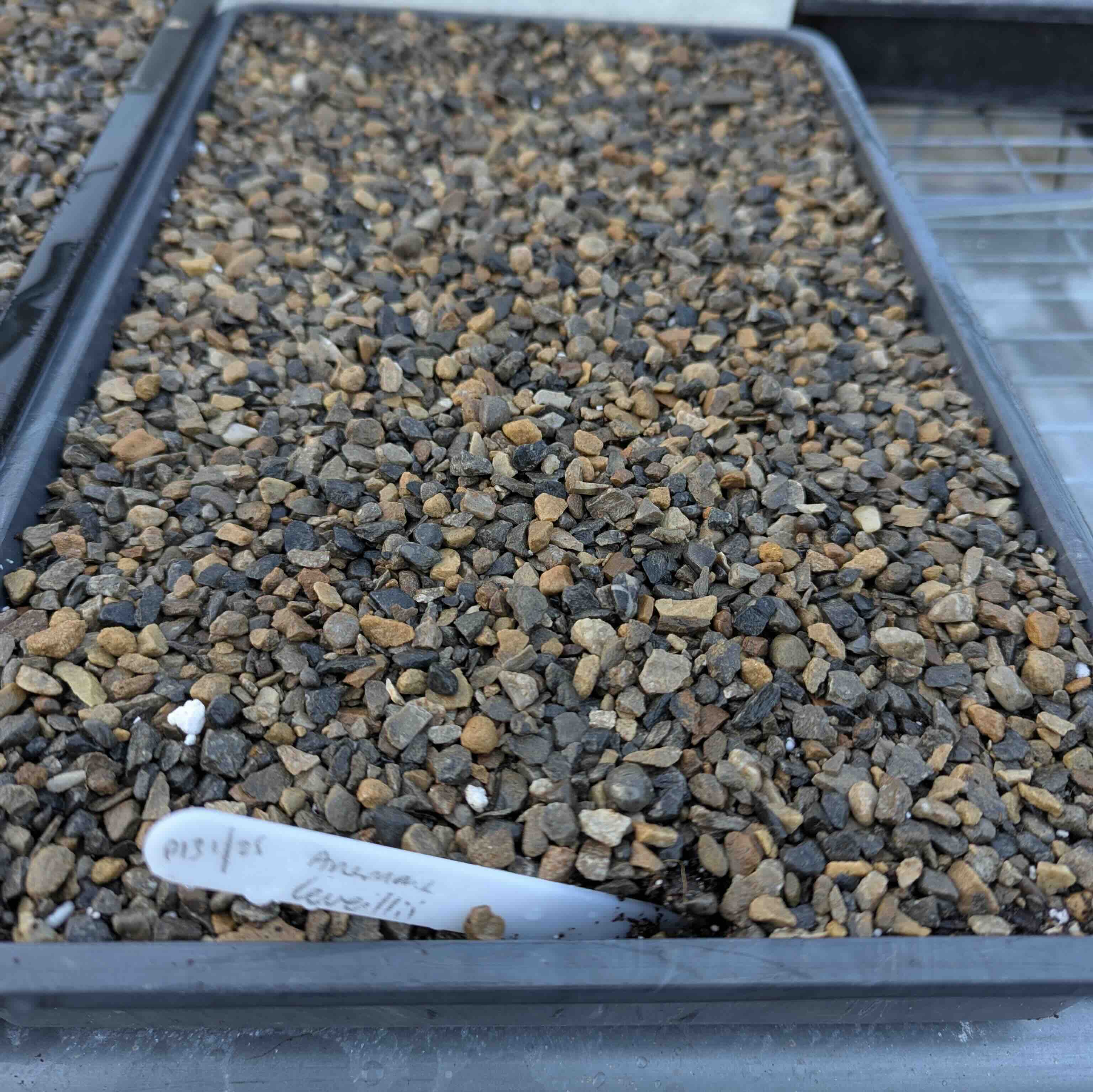
2. Seed size is a useful clue too - usually, the smaller the seed, the closer it needs to the surface before it will germinate. Cover seeds in no more than twice their own depth, or with something that lets light in, such as vermiculite. I use a board to gently flatten the surface of a seed tray before sowing seeds. This ensures that it is evenly firm (I don't press hard) and there aren't any deep holes for small seeds to fall into.
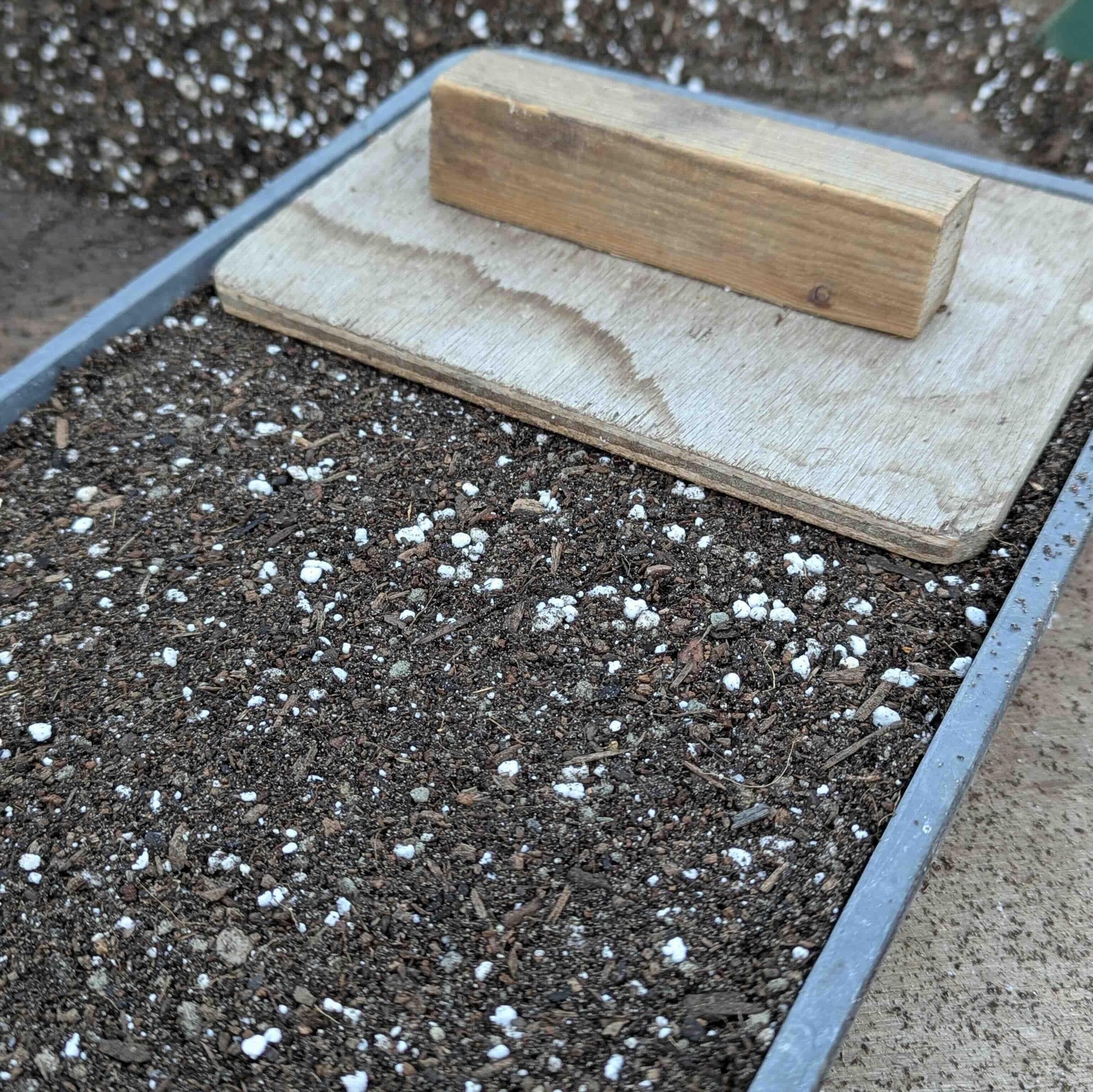
3. Ifseeds have a fleshy covering, soak them for a day, then wash and dry them before sowing - the coating might have a chemical inhibitor in it.
4. The compost that you sow seeds into needs to have little air pockets all through it. I'm not going to start a biology lesson here and start talking about respiration - just trust me that roots need oxygen to grow 🙂. Wet, claggy compost is no good at all - your seeds will probably just rot. But don't let the seeds dry out either. Yes, it can be a difficult balance to strike. This is the mix I used for the Anemones I sowed yesterday - it's a blend of peat-free compost (we use Melcourt), fine bark, perlite and sand. Running it through my fingers, it feels fine, open and slightly gritty, which seems about right to me.

5. If you sow seeds too close together, their roots will touch and compete for space when they are far too young and none of them will grow really well, or some will outcompete the rest. These Anemone seeds are too close together, I think - they're almost touching now and haven't started growing yet.
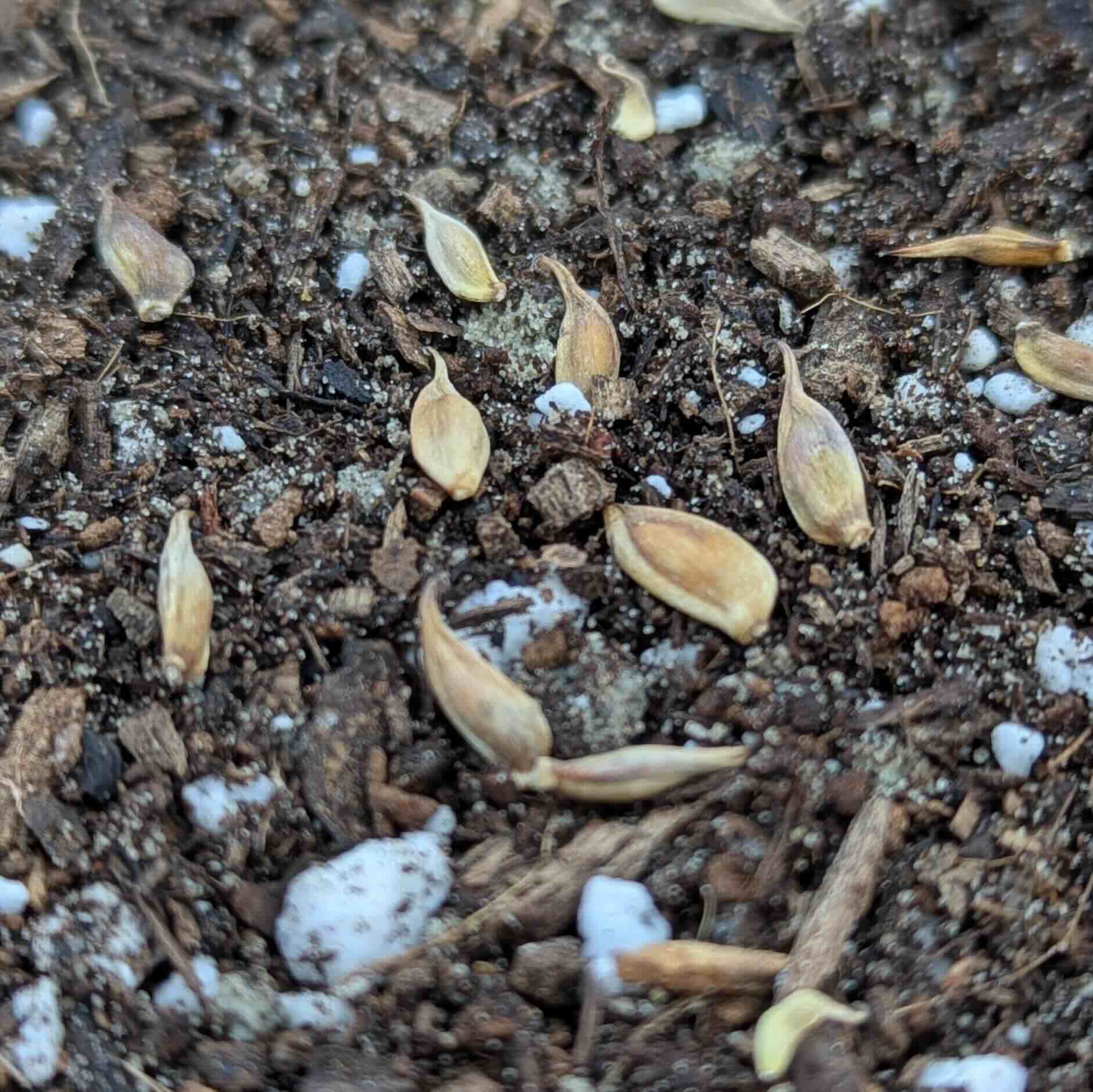
And these are about the right distance apart, I feel. Very, very roughly, I aim to leave around 3-5 seeds worth of space between each seed.
 But there is only so much I can tell you. You don't get better at growing plants by reading about it, only by trying it for yourself. It is helpful to make notes of what you sowed, when and how, what worked, and what didn't. If you're new to growing from seed, try easier, cheaper seeds first - or even better, ones you've collected from your own garden...
But there is only so much I can tell you. You don't get better at growing plants by reading about it, only by trying it for yourself. It is helpful to make notes of what you sowed, when and how, what worked, and what didn't. If you're new to growing from seed, try easier, cheaper seeds first - or even better, ones you've collected from your own garden...
A great way to get started is with one of our Seed Saving Kits , which contain everything you need to collect and store your own seeds, in a beautifully presented tin. It includes an exclusive 12 page booklet written by me, answering the hot questions about seed collecting such as 'Will my seeds grow into the same plants as the parent?', 'How do I know when seeds are ripe?' and 'How do you know which bits are seed and which are chaff?' and much more. At the back are three pages of suggested seeds to collect from your own garden with tips on when and how to collect them. We offer refill packs for the three different bags and labels, or you can get your seed collecting off to a flying start by buying both together and save £2.50. It's a great gift for any gardener, or just treat yourself and enjoy it 🙂.
Happy seed collecting!
Sue.
